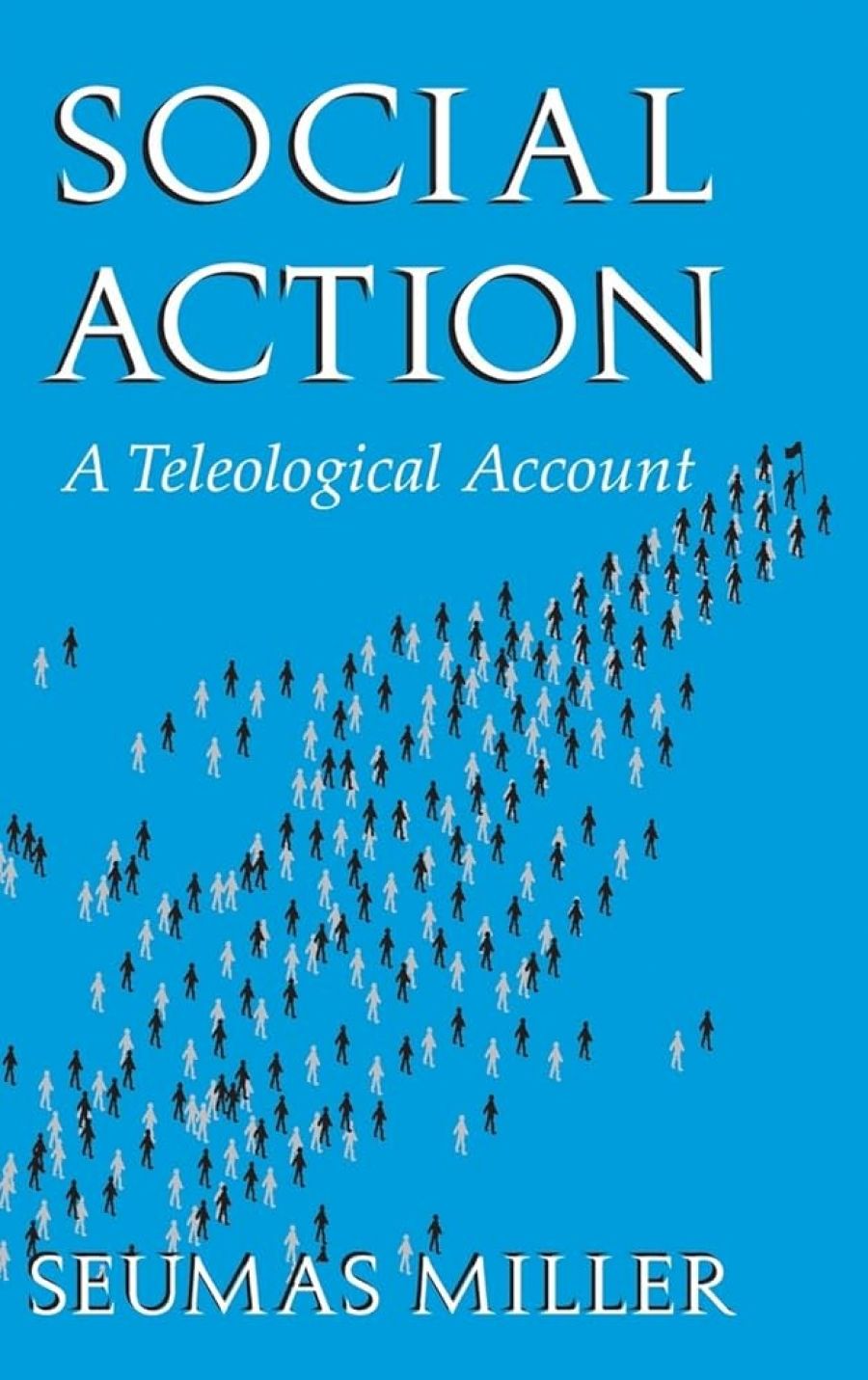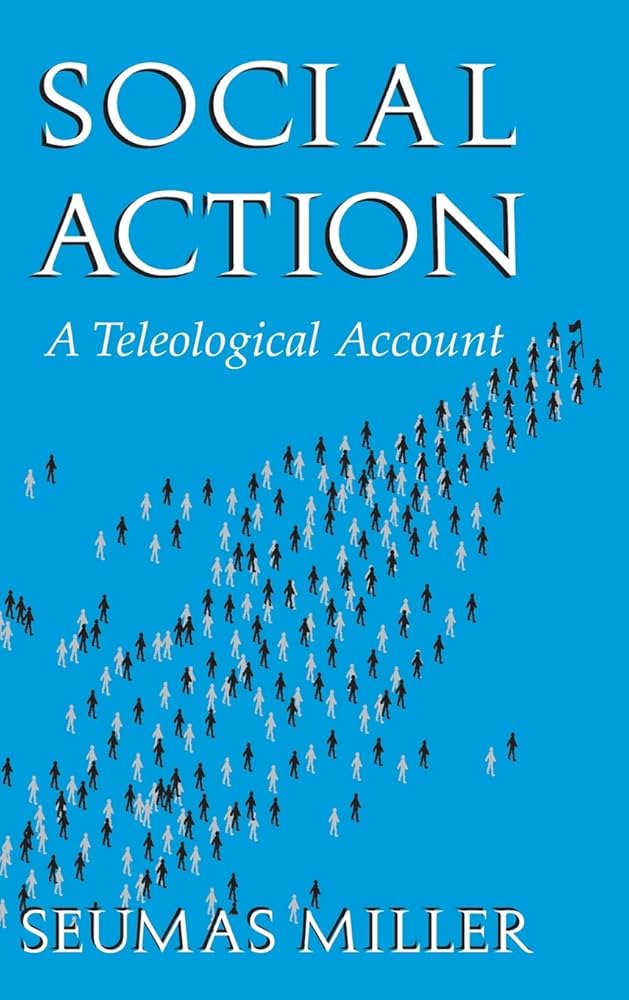
- Free Article: No
- Contents Category: Philosophy
- Review Article: Yes
- Article Title: The Big Stick
- Online Only: No
- Custom Highlight Text:
Explanation in social theory or social science must come down to the choices, decisions and actions of individual human beings and their reasons for acting. Obviously, this does not rule out earthquakes, floods and meteor storms as powerful causes of historical and social change; but they only change the human world via the agency of human beings. Seumas Miller’s book does not mention ‘methodological individualism’, and it is a gloss to relate it to that debate in philosophy of social science. Miller argues against the existence of any entities other than human beings (and some other animals) who have beliefs, intentions and ends. There are no irreducibly collective or corporate beliefs and intentions. What underlies the appearance of collective belief or intention are ‘joint actions’ and ‘collective ends’. A collective end is an end that a person has and cannot realise or bring about without engaging in joint action with beings who also have that end.
- Book 1 Title: Social Action
- Book 1 Subtitle: A Teleological Account
- Book 1 Biblio: CUP, $49.95 pb, 319 pp
- Book 1 Cover Small (400 x 600):

- Book 1 Cover (800 x 1200):

We have joint action and a collective end in a case as simple as two people on a highway, going in opposite directions, who encounter a fallen tree blocking the road. They get out of their cars, take one end of the tree each, and remove it from the road. In such a case, each has the end that the road be clear but sees that clearing is not a job for one. Each believes the other has such an end in gripping and lifting as he does, and each believes that the other so believes. Each does as he does because the other is doing his part. Each knows this about the other. This is ‘mutual knowledge’, a key feature of all joint action. Miller calls his theory Collective End Theory. He does not believe that joint action can be composed out of just intentions and beliefs on the part of two or more persons. The state of mind of having X as an end is also needed, and it is not the same as the intending that X. A man maintains a farm, almost certain that his son will eventually sell to a developer. He hopes that his son will carry on farming and that his son’s son will too. That for which he hopes, he has an end. Because he has no power and no desire to compel his progeny to carry on as farmers, it is wrong to say the man intends it. It would be wrong to explain his acts by such an intention. Miller thinks it is necessary to say the farmer has, as an end, the carrying on of farming by his progeny. Having an end, as understood here, is a state of mind we can be in, though our chances of realising that end vary greatly.
Miller is exploiting the ancient idea that you cannot compose an intention to bring about X out of intentionally doing Y and knowing that Y will bring about X. Even if I, knowing that morphine will kill a patient, give it to him, I do not thereby intend to kill him. What is needed, according to this doctrine, is that I should have as my end his death, not, as I do, his relief from pain. Whether, in such cases, we say that I do not intend his death because I do not have that as my end, it can still be appropriate to hold me responsible for his death. It may mean the difference between one degree or the other of homicide, but few injustices would be done if we, as legal fiction, did treat an intention as a composition of such knowledge and action. It is fair enough to insist that my conative states differ when I am out to relieve his pain and out to end his life. Joint action is interdependent, as indicated by the feature that one person does his bit just in case he believes the other is doing his, and interdependent for its success on each succeeding.
Miller is now able to make a plausible case that joint action generates conventions and social norms. Miller argues against views of convention that make them matters of irreducibly collective ‘we-intentions’; he also argues against the view that conventions have to be solutions to coordination problems, and that there have to be alternatives to conventions that would also be conventions. Miller rightly sees that this stems from over-attention paid to driving on the left and driving on the right. Conventions, often trivial, may, because of the moral significance of their content, also be social norms. But not all social norms are conventions. Many cases of abiding by a norm are not a matter of a procedure of repeated action in specified circumstances.
What marks off social norms is that we conform to them because we believe we ought to, believe that others ought to, and believe that others ought to believe that they ought to. This does not mean that we conform to norms in order to gain approval from others even if we may be inducted into norm-abidance partly through the eyes, or the sticks, of others. Miller argues against the theory that norm-abidance is a matter of avoiding the disapproval of others. However it comes about, most of us eventually conform to social and individual norms because we approve of ourselves doing so.
Even so, it is right to say, as Miller’s theory implies, that my own adherence to a norm is vulnerable to others ceasing to adhere to it. This vulnerability of norms could be exploited to bring out features of the relation between social morality and individual ideals, which ideals may include repudiation of social morality or ambitions to transform it.
The ideas of joint action and collective ends, and their use in elucidating the nature of conventions and norms, occupy the most important part of this book. Having got it pretty much right, Miller is able to give good accounts of organisations and other collective entities, as well as of the law and our obligation to obey it (the free-rider problem is neatly dealt with). Miller also shows how we can allow for collective rights and responsibilities without having to surrender fundamental individualism. These accounts avoid the metaphysical fool-hardiness of treating entities other than individual human beings as bearers of beliefs, desires, intentions and ends.


Comments powered by CComment